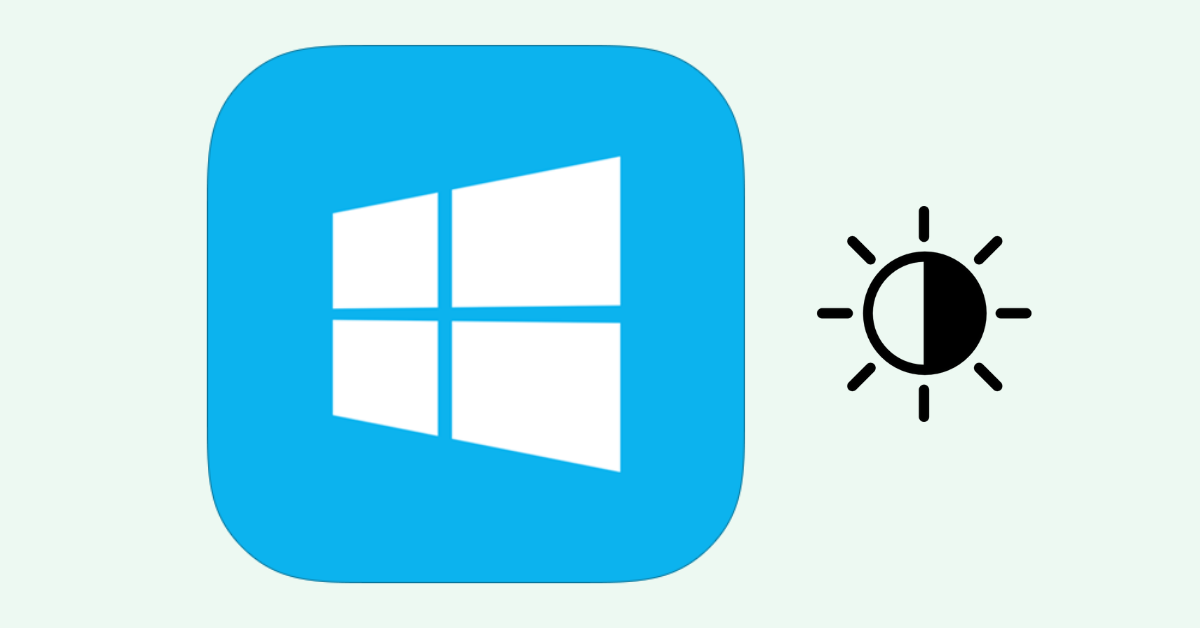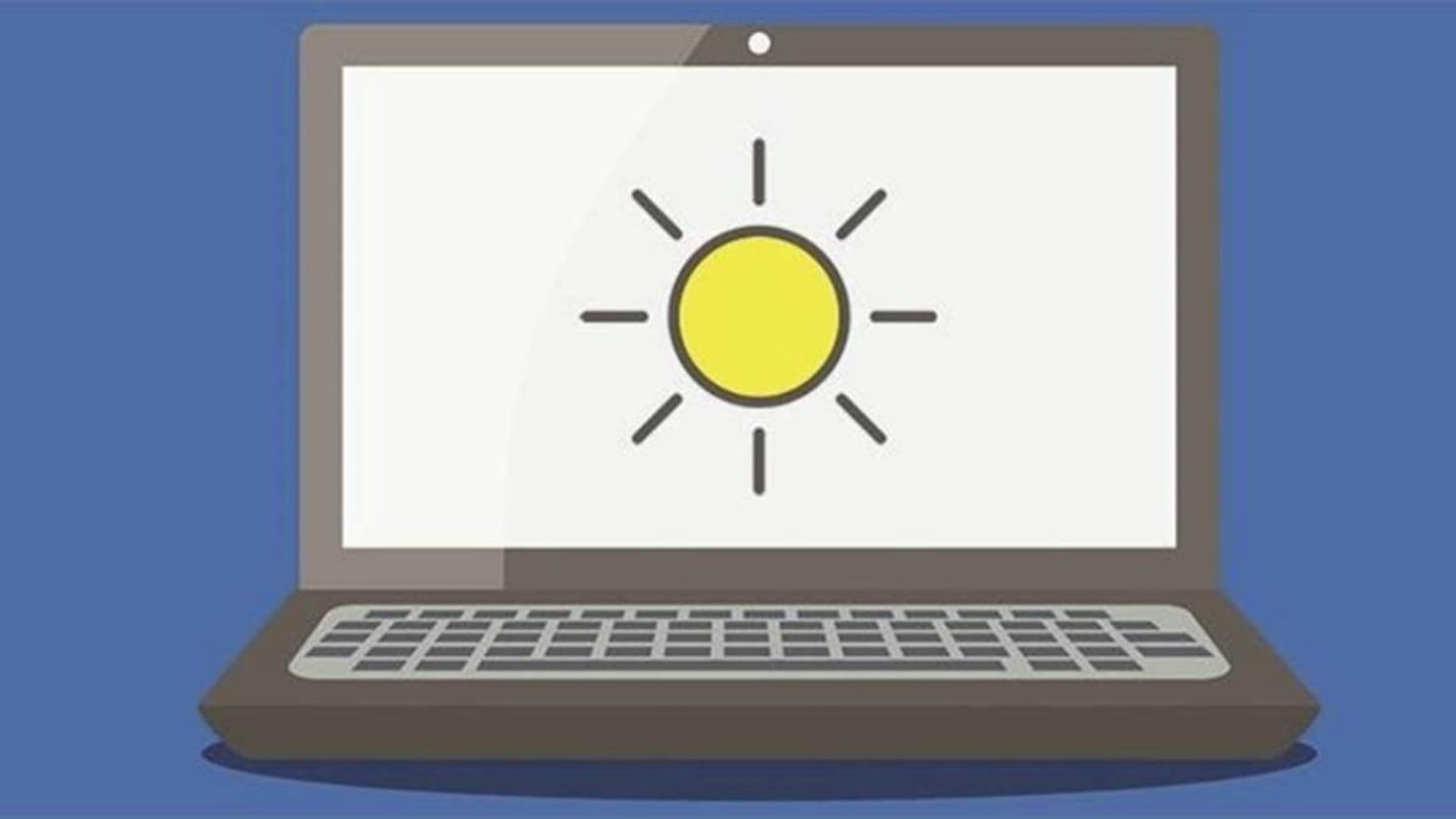- Master all the methods available in Windows 10 to easily adjust brightness.
- Discover advanced options like adaptive brightness and automatic battery adjustment
- Avoid visual discomfort and extend battery life by optimizing your screen settings.

If you spend many hours in front of the computer, you have surely felt annoyed by the Brightness of the screen: Too high can cause headaches, eye strain, or even trouble sleeping. Fortunately, Windows 10 It offers you several ways to adjust the brightness to make it more comfortable and healthy for you to work or enjoy your computer, as well as save battery life if you use a laptop.
In this article, you have the guide more complete and easy to follow on how to change the screen brightness in Windows 10. Whether you're looking for a quick fix, detailed settings, or advanced options, we've got you covered. all possible methods based on the experience of the best tutorials and documentation in the industry.
Quick Methods to Adjust Screen Brightness in Windows 10
The need to adjust the brightness varies throughout the day: you may prefer a dimmer screen in the evening or need to increase the brightness for graphic tasks. Windows 10 makes it easy with several quick and more advanced options to adjust it to your liking.

Through the Activity Center
The most direct and simple way is to use the Activities Center (lower right corner of the taskbar, where notifications appear). When you click on the message icon, you will see a series of shortcuts; among them, there usually appears a brightness slider. Just move it to instantly change the brightness.
If the slider does not appearClick 'Expand' to see all hidden options. This will give you direct access to brightness adjustments without having to navigate through complex menus.
Using system settings
Another simple and common way is to do it from the Windows 10 settings:
- Push the button Home and select Configuration (cogwheel icon).
- Sign in System and then Screen.
- below section Brightness and color You will find a slider called Change the brightness; move this control until you find the level that is most comfortable for you.
This method offers very intuitive visual control and is perfect if you want to precisely select an intermediate value. It's ideal for those who work with images or video and need to be careful with colors.
Windows Mobility Center
El Windows Mobility Center It is specifically designed for Windows laptops and tablets. Here, in addition to managing the gloss, you can control other elements such as volume, battery or wireless connections.
- You can open it by right-clicking on the battery icon and selecting Mobility center, or by pressing Windows + X and choosing the corresponding option.
- You'll see a slider to adjust the screen brightness on the left, easy and accessible at any time.
Shortcuts and even faster methods to change brightness
For those seeking maximum speed, many laptop keyboards They have special function keys to modify the gloss (usually with a sun icon, sometimes accompanied by arrows). You must hold down the key Fn and, at the same time, press the button that increases or decreases the brightness. This way, you can change it instantly, without having to access any menu.
If you're using a desktop PC, your monitor may have its own buttons or knobs to directly adjust the brightness, independent of Windows.
Advanced settings and automatic brightness adjustments
Windows 10 also offers Advanced Options for those who want to customize the experience according to their working conditions and preferences.
How adaptive brightness works
Many modern computers have a ambient light sensor, which allows you to activate the Adaptive BrightnessThis means the screen brightness automatically adjusts to the ambient light, helping to reduce eye strain and optimize energy consumption.
- To turn it on or off, go to Settings > System > Display and look for the option Automatically adjust brightness based on lightIf your device has this sensor, it will appear here.
- You can disable this feature if you prefer to maintain manual control of brightness at all times.
Adjust brightness based on battery status
This option is especially useful on laptops. Through the battery saving mode, you can automatically reduce the brightness when the charge decreases, helping to extend the life of your battery.
- Accede to Settings > System > Battery.
- Activate the option Battery saving and select the percentage at which you want it to activate.
- Check the box Reduce screen brightness while battery saver is on.
This way, Windows will automatically manage brightness to optimize battery life and protect your eyes.
Power options and detailed brightness settings
For even deeper customization, you can configure the Energy Profiles:
- Search Energy options in the Start menu or with Cortana.
- Select your Power plan and access Change plan settings.
- From there, you can adjust the gloss depending on whether the device is connected to the power supply or in battery mode, in addition to defining specific behaviors in different profiles.
- You can also turn the adaptive brightness in advanced settings.
Brightness and color adjustments: taking care of your eyesight and image fidelity
El gloss not only affects comfort, but also eye health. A excess luminosity can cause fatigue, dry eyes and headaches, especially in dark environments. On the other hand, a brightness too low In bright environments it imposes additional strain on the eyes.
For creative professionals, Windows 10 includes advanced features for color management, which guarantee a image fidelity on calibrated monitors and supported apps. Activate them from Settings > System > Display Profile > Color, helps to achieve accurate and consistent results in color reproduction.
How to adjust brightness, sharpness, and contrast in images
To change the brightness or sharpness of an image in Office programs or similar editors:
- Click on the image you want to edit.
- Access the tab Image format, in the section Adjust, and select Fixes.
- From there, you can try out different thumbnails or manually adjust the values with the sliders.
Solutions if you can't find the brightness options in Windows 10
In some cases, especially on desktop or older computers, the brightness control may not appear due to outdated or incompatible drivers.
- Verify that the graphics card drivers are up to date and correct. Download them from the manufacturer's official website (Intel, AMD, Nvidia).
- Check the windows updates and make sure you have the latest version.
- If the problem persists, check the controls on your monitor or external monitor, if you use one.
Frequently Asked Questions About Brightness in Windows 10
Why isn't the brightness setting showing up on my PC? This is usually due to driver issues or because the external monitor doesn't allow brightness control from Windows. Most laptops and convertible devices should always display this option.
Does brightness affect battery life? Absolutely. Keeping the brightness at moderate levels can extend the laptop's usage without needing to charge it, while also reducing the heat generated.
Does adaptive brightness work on all devices? Only on devices with an ambient light sensor, primarily modern laptops and tablets. If you don't see the option, your device probably doesn't have this sensor built in.
Extra tips to take care of your eyes and save energy
Working long hours in front of a screen requires attention. Here are some tips:
- Avoid keeping the brightness at maximum whenever possible; adjust it according to the ambient light.
- Turn on dark mode in supported apps to reduce eye strain.
- Use light backgrounds during the day and warm tones or mode Night Light at night to reduce blue light.
- Take frequent breaks and do eye exercises to rest your eyes.
Managing your screen brightness in Windows 10 is simple and versatile, allowing you to tailor the experience to your needs. With many options available, you can optimize your vision, save battery life, and improve the fidelity of your creative work, enjoying a more comfortable and healthy experience.
Table of Contents
- Quick Methods to Adjust Screen Brightness in Windows 10
- Shortcuts and even faster methods to change brightness
- Advanced settings and automatic brightness adjustments
- Power options and detailed brightness settings
- Brightness and color adjustments: taking care of your eyesight and image fidelity
- Solutions if you can't find the brightness options in Windows 10
- Frequently Asked Questions About Brightness in Windows 10
- Extra tips to take care of your eyes and save energy

